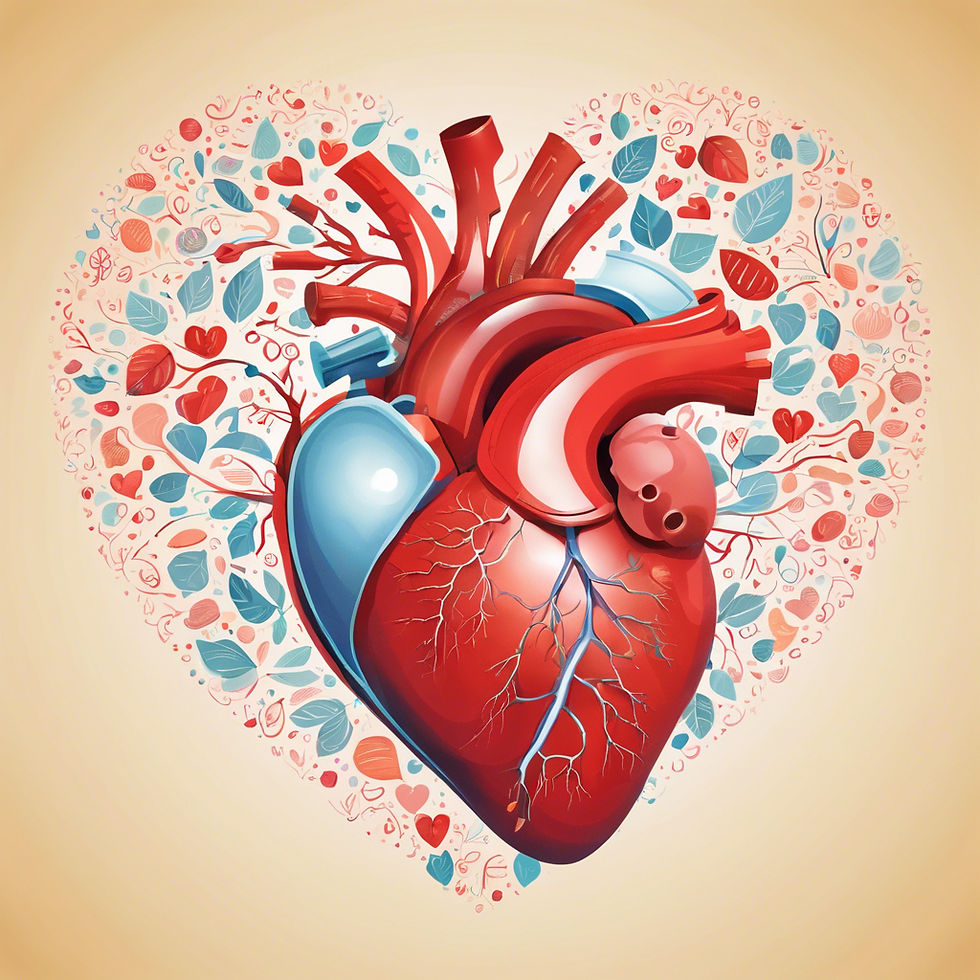Pain & Heart Rate Variability: Part 4
- Matt Bennett
- Aug 21, 2024
- 4 min read

In the previous parts of this blog post series, we discussed the definition and measurement of pain, the relationship between pain and heart rate variability (HRV), and the role of psychological factors in modulating pain perception. In this part, we will explore how HRV biofeedback, a technique that trains people to regulate their autonomic nervous system activity, can help people with acute and chronic pain.
What is HRV biofeedback?
HRV biofeedback is a form of biofeedback that uses real-time feedback on HRV parameters to guide people to breathe at their optimal rate and depth. By doing so, they can increase their HRV and achieve a state of physiological coherence, which is associated with improved emotional regulation, cognitive performance, and health outcomes. This can make you feel more alert and focused in your daily life.
HRV biofeedback builds upon the science that HRV reflects the balance and flexibility of the autonomic nervous system, which regulates the body's response to stress and pain. By increasing HRV, people can enhance their ability to cope with pain and reduce its negative impact on their quality of life, giving them a sense of control over their pain management.
How does HRV biofeedback help with pain?
There are several mechanisms by which HRV biofeedback may help with pain, both directly and indirectly. Some of the possible mechanisms are:
HRV biofeedback activates the parasympathetic nervous system, which inhibits the transmission of pain signals from the peripheral nerves to the brain.
HRV biofeedback modulates the endogenous opioid system, which produces natural painkillers in the body and reduces pain sensitivity.
HRV biofeedback improves mood and emotional regulation, lowering pain's perceived intensity and unpleasantness.
HRV biofeedback increases self-efficacy and locus of control, empowering people to manage their pain and cope with its consequences.
HRV biofeedback reduces inflammation and oxidative stress, which can exacerbate pain and impair healing.
What is the evidence for HRV biofeedback and pain?
Several studies have investigated the effects of HRV biofeedback on pain in different populations and settings. A recent systematic review and meta-analysis by Hassett et al. (2016) found that HRV biofeedback was effective in reducing pain intensity, pain interference, depression, anxiety, and disability in patients with chronic pain conditions, such as fibromyalgia, rheumatoid arthritis, and chronic pelvic pain. The authors also reported that HRV biofeedback was superior to sham biofeedback or usual care in improving these outcomes.
Other studies have shown that HRV biofeedback can reduce pain and improve function in patients with acute pain, such as postoperative pain, dental pain, or burn pain. Moreover, HRV biofeedback can enhance the analgesic effects of pharmacological interventions, such as opioids, nonsteroidal anti-inflammatory drugs, or local anesthetics, and reduce their side effects, such as nausea, vomiting, or sedation.
How can Optimal HRV help you practice HRV biofeedback?
Optimal HRV allows you to measure and improve your HRV using biofeedback. The app provides personalized feedback on your HRV parameters, such as RMSSD, SDNN, and LF/HF ratio, and guides you to breathe at your resonant frequency, which is the breathing rate that maximizes your HRV. By using Optimal HRV regularly, you can train your autonomic nervous system to be more balanced and resilient and reap the benefits of HRV biofeedback for your pain management and overall well-being. You can also track your progress and see how your HRV changes over time and in response to different factors, such as stress, sleep, exercise, or medication.
On September 19th, Optimal HRV teammates Dr. Inna Khazan and Dr. David Hopper will present a three-hour Pain Management & Heart Rate Variability presentation. This comprehensive training will equip you with the necessary knowledge to understand the complex relationship between pain and heart rate variability. You can learn more about the training here.
If you want to learn more about Optimal HRV and how it can help you with pain and HRV biofeedback, visit our website or download our app today. https://www.optimalhrv.com/
References
Cusens, B., Duggan, G. B., Thorne, K., & Burch, V. (2010). Evaluation of the breathworks mindfulness-based pain management program: Effects on well-being and multiple measures of mindfulness. Clinical Psychology & Psychotherapy, 17(1), 63-78.
Hassett, A. L., Radvanski, D. C., Vaschillo, E. G., Vaschillo, B., Sigal, L. H., Karavidas, M. K., Buyske, S., & Lehrer, P. M. (2016). A pilot study of the efficacy of heart rate variability (HRV) biofeedback in patients with fibromyalgia. Applied Psychophysiology and Biofeedback, 41(1), 15-28.
Karavidas, M. K., Lehrer, P. M., Vaschillo, E., Vaschillo, B., Marin, H., Buyske, S., Malinovsky, I., Radvanski, D., & Hassett, A. (2007). Preliminary results of an open label study of heart rate variability biofeedback for the treatment of major depression. Applied Psychophysiology and Biofeedback, 32(1), 19-30.
Lehrer, P. M., & Gevirtz, R. (2014). Heart rate variability biofeedback: How and why does it work?. Frontiers in Psychology, 5, 756.
Malliani, A., Pagani, M., Lombardi, F., & Cerutti, S. (1994). Cardiovascular neural regulation explored in the frequency domain. Circulation, 84(2), 482-492.
McGrady A, Conran P, Dickey D, Garman D, Farris E, Schumann-Brzezinski C. The effects of biofeedback-assisted relaxation on cell-mediated immunity, cortisol, and white blood cell count in healthy adult subjects. J Behav Med. 1992 Aug;15(4):343-54.
Nahman-Averbuch, H., Yarnitsky, D., Sprecher, E., & Granovsky, Y. (2015). Changes in pain modulation occur in both fibromyalgia and healthy subjects in response to different types of chronic pain patients. Pain Research & Management, 20(5), 272-279.
Schein, M. H., Gavish, B., Herz, M., Rosner-Kahana, D., Naveh, P., Knishkowy, B., Zlotnikov, E., Ben-Zvi, N., & Melmed, R. N. (2001). Treating hypertension with a device that slows and regularises breathing: A randomised, double-blind controlled study. Journal of Human Hypertension, 15(4), 271-278.
Zautra, A. J., Fasman, R., Parish, B. P., & Davis, M. C. (2007). Daily fatigue in women with osteoarthritis, rheumatoid arthritis, and fibromyalgia. Pain, 128(1-2), 128-135.


